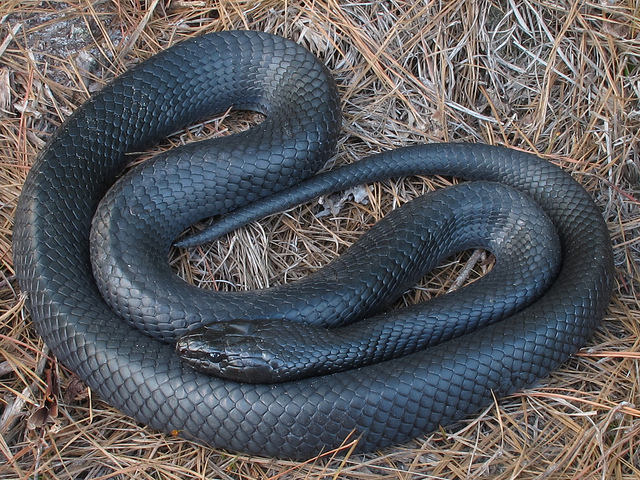

You can house two eastern indigo snakes together as long as you provide enough room in the enclosure. It’s rare for eastern indigo snakes to behave aggressively, but if they feel threatened, these snakes may hiss loudly, flatten their necks, and vibrate their tails. TemperamentĮastern indigo snakes have a laid-back temperament and enjoy being active. However, in the wild, eastern indigo snakes are likely to live shorter lives than captive snakes and have a life expectancy of just 11 years. Males and females have an average lifespan of 26 years in captivity. Males can grow to 8.5 feet long, while females usually grow to 6.5 feet long. Male eastern indigo snakes are bigger than females. Males and females have the same markings and colorings, which makes sexing these snakes difficult. These snakes also have reddish-orange patterning around their throats, cheeks, and chins.įrom a distance, the eastern indigo snake looks a solid black color, but up close and in sunlight, the skin’s blueish tones can be seen. Appearance and BehaviorĮastern indigo snakes have lateral scales and a blue-black dorsal. Over-collection caused a decline in eastern indigos in the wild, and today, only captive-bred snakes can be sold. In 1978, eastern indigo snakes were listed as a threatened species in the Endangered Species Act. In the winter, eastern indigo snakes will hide out in the burrows of gopher tortoises, and in the summer, eastern indigos reside near wetlands.

The eastern indigo snake’s natural habitat varies from season to season. The eastern indigo snake (drymarchon couperin) is native to southeastern regions in the United States, including Georgia, Florida, and southeastern Mississippi. These snakes are commonly found in dry glades, stream bottoms, sandy soils, and sandy hills.

Adult Size: 8.5 feet (males), 6.5 feet (females) Average Lifespan: 20–26 years in captivity Diet: Carnivorous Housing: 6 x 3 x 2 feet enclosure, 70–78☏, 85☏ for basking Experience level: Intermediate Origin Choosing and Buying an Eastern Indigo Snake Eastern Indigo Snake Overview Common Name: Eastern indigo snake, blue indigo snake, blue bull snake, blue gopher snake Scientific Name: Drymarchon couperin Natural Habitat: Cane fields, sandy soils or hills, dry glades, flatwoods, and stream bottoms in southeastern regions of the United States.


 0 kommentar(er)
0 kommentar(er)
